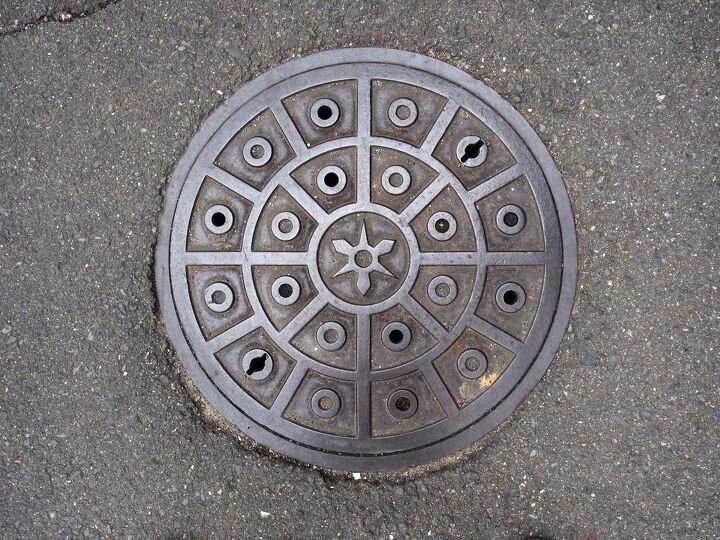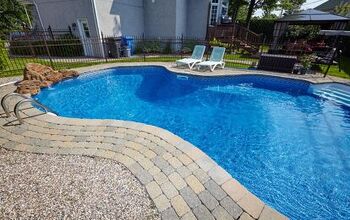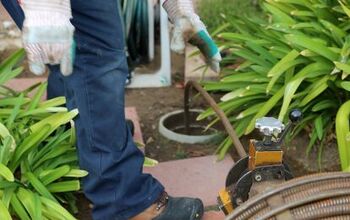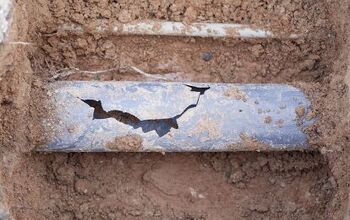What Is A Sewer Tap? (Find Out Now!)

Connecting to the main sewage line from your house is a convenient and modern way to handle wastewater. Not only is it convenient, but it requires very little maintenance to keep a secure connection from your house to the city’s wastewater treatment plant. To secure a strong connection, a common plumbing component called a sewer tap is used.
A sewer tap is a specialized plumbing component that creates a secure connection between your home’s drains and the municipal water treatment plant responsible for moving sewage away from your home. The sewer tap must provide a water-tight connection to prevent wastewater from leaking into the ground. Although essential, a sewer tap requires little attention to maintain and is a durable and long-lasting sewer component.
However, if a problem does arise with your sewer tap, it is the homeowner’s responsibility to repair it. Stray tree roots and freezing temperatures can cause damage to the sewer tap, which can cause it to leak. Signs of a possible broken sewer tap include excessive mold, gas odor, or sluggish drains. A professional and licensed plumber must come to your room to repair or replace your sewer tap if a problem arises.
Do You Need a Sewer Installation or Repair Contractor?
Get free, zero-commitment quotes from pro contractors near you.

What Is a Sewer Tap?
The sewer tap is a specific connection that is part of your home’s plumbing system. The tap is the particular connection point that joins your home’s sewer drain line to the municipal water treatment plant. The sewer tap is responsible for creating a water-tight seal that helps to prevent water from escaping and leaking into the ground.
Where Is a Sewer Tap Located?
Usually, the sewer tap is located near the sewer stub. The stub is a part of the plumbing that branches off from the main plumbing line and goes to your property line. The sewer tap is part of the sewer stub, which helps to connect your home and the municipality.
The sewer stub may be in a different location for each house. The best way to find your stub line is to contact your local zoning office. They have records of where the sewer lines are located and can help you locate your specific line on your property. Most zoning officials are happy to come to your property to mark your stub line and sewer tap location.
What Does a Sewer Tap Do?
The sewer tap is an essential part of the plumbing connected to your home. The sewer tap provides a vital connection between your home’s drains and the municipal sewer plant. The sewer tap forms a tight connection that allows you to flow into the main sewer system, preventing water from leaking or running into the ground around your home. The sewer tap creates a connection for wastewater to flow, so you don’t need a septic tank to hold waste.
If you are within range of tapping into the municipal water system, you will have a sewer tap. This component is essential for homes, both new and old. To add a sewer tap or replace a sewer tap, you will require a permit from the city and a licensed plumber to help perform the work.
How Do I Maintain My Sewer Tap?
Luckily, the sewer tap is a very low-maintenance part of your home’s plumbing that is easy to take care of. The primary maintenance you need to do for the swerve tap itself is to protect the structure from damage which means keeping your drains free of possible clogs. Over time, you may notice that the sewer fittings start to wear or become loose, so be sure to replace small parts as necessary.
Unfortunately, the sewer tap is considered the homeowner’s responsibility, so if a problem occurs within the sewer tap, you must make the necessary repairs. Luckily, most repairs are relatively straightforward, and most licensed plumbers can quickly inspect your sewer tap and drain line to recommend the proper repairs to prevent the problem from occurring again.
What Can Damage My Sewer Line and Tap?
Although generally very low maintenance and durable, it is possible to have a damaged sewer line or sewer tap. While the sewer tap does connect to public city water, it is the homeowner’s responsibility to repair a broken sewer line or sewer tap. Damage can come from several common sources, including:
- Roots – Tree roots that grow near or around sewer lines and taps can cause cracks to form.
- Extreme Temperatures – If you live in an area prone to freezing temperatures, your sewer tap can freeze and break.
- Clogs – Routine and large clogs can form in your sewer line that can damage the line itself or the connection between your line and the public city sewer.
- Corroded Pipe – As pipes age, they can start to corrode due to weather, hard water, or caustic chemicals. A plumber using a specialized camera will be able to inspect your pipes and confirm their integrity visually.
Although rare, a sewer tap can become damaged. A licensed plumber will be able to locate and inspect your sewer tap to confirm the damage and will be able to repair or replace your sewer tap if necessary.
What Are Signs My Sewer Tap Is Broken?
Although a sewer tap is a strong and durable connection between your home and the main water drains to the city, it is possible to have a broken tap. Unfortunately, the sewer tap is the homeowner’s responsibility, and a licensed plumber is required to repair a broken sewer tap. Some common signs that your sewer tap is broken include:
- Constant or regular sewage backups and clogs.
- Slow drains inside the house.
- Strong sewer gas odor in your home.
- New foundation cracks or settlement cracks.
- Spotty green and lush grass patches in your yard.
- Mold problem near drains
If you notice any of these signs around your home, you may want to call a professional plumber. Using a specialized camera that travels deep into your home’s pipes, your plumber will inspect the area around your sewer tap to ensure it is functioning correctly.
Do You Need a Sewer Installation or Repair Contractor?
Get free, zero-commitment quotes from pro contractors near you.

Related Questions
Can I switch from septic to public sewer easily?
The sewer tap is the essential piece that allows you to connect your drains and pipes to the central sewer system in your city. If you can connect to the city’s water treatment plant, connecting your septic system to the public sewer is very easy. This process must be completed by a licensed plumber.First, contact the public works department in your city to confirm a sewer line is available. Then, obtain the correct permits to dig and build around your home. You’ll be sure you want the location of the main city sewer line properly marked. Lastly, contact a professional plumber to install a sewer tap into the nearest public sewer line so you can drain wastewater directly to the city.
What is better, septic or sewer?
Choosing between septic or sewer, if given a chance, is a big decision, and there are definite pros and cons to each. A septic system can require a little more daily maintenance and ongoing attention, but they have several advantages too. Septic doesn’t pump wastewater through a water treatment facility, so there is less energy usage. Plus, the septic tank is a green alternative, and they are very long-lasting and relatively affordable.Comparatively, connecting to the main sewer line is extremely easy and very low maintenance. However, a sewer line does come with added utility usage and a monthly bill for the ability to tap into the central city water treatment plant. Be aware that your location will mandate your options for sewer or septic systems. Much of it will depend on where your home is in relation to the main sewer lines in your city.
Related Articles

We are a team of passionate homeowners, home improvement pros, and DIY enthusiasts who enjoy sharing home improvement, housekeeping, decorating, and more with other homeowners! Whether you're looking for a step-by-step guide on fixing an appliance or the cost of installing a fence, we've here to help.
More by Upgraded Home Team



























